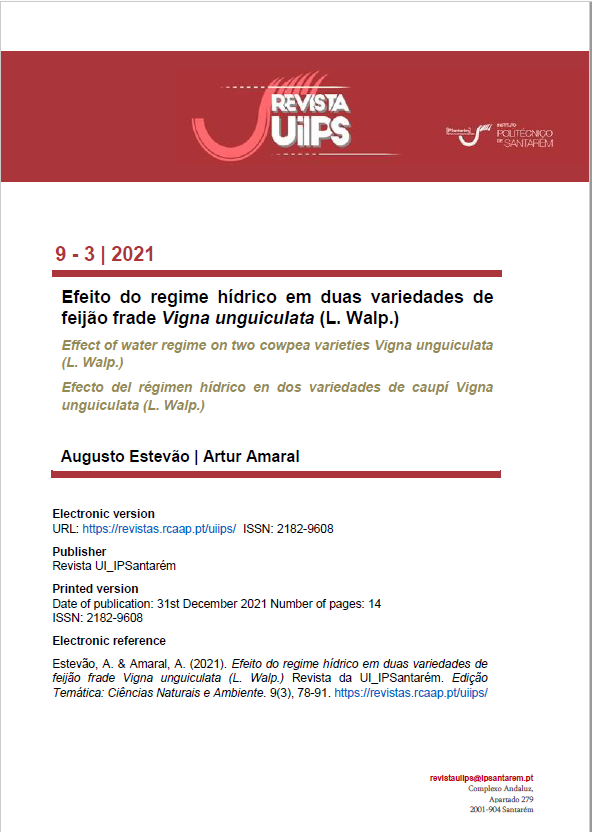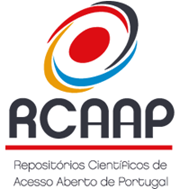Effect of water regime on two cowpea varieties Vigna unguiculata (L. Walp.)
DOI:
https://doi.org/10.25746/ruiips.v9.i3.26204Keywords:
biomass, cowpea varieties, water regime, protein content, Vigna unguiculata (L. Walp.)Abstract
Cowpea, as a leguminous crop, has a high level of vegetable protein and the ability to adapt to different environments, namely, water stress. In 2019, a trial was installed in S. Pedro, Santarém, with the goal of evaluating the growth, yield and protein content of two cowpea varieties (V1 and V2) subject two irrigation allocations, according to with evapotranspiration (D1) and watering with 50% of the allocation of the previous treatment (D2). The two-factors trial was installed in randomized blocks, considering the variety as the main factor and the water regime as the secondary factor. The V2D2 treatment showed greater water efficiency (1,44kgMSgrain/m3). Variety V2 had the highest grain yield potential (3 269kg/ha). The yield at 12% moisture was 2 027kg/ha in V1D2, 2 782kg/ha in V1D1, 2 502 kg/ha in V2D2 and 4 037kg/ha in V2D1. V1 showed greater adaptation to the water regime with less irrigation endowment, with a greater number of pods per plant (28,7 pods/plt.) although of smaller size. The V1D2 treatment was the one with the lowest weight of one thousand grains (190g/1000 grains).

Downloads
Published
How to Cite
Issue
Section
License

This work is licensed under a Creative Commons Attribution-NonCommercial-NoDerivatives 4.0 International License.
Authors publishing in this journal agree to the following terms:
Authors retain copyright and grant the journal the right of first publication, with the article simultaneously licensed under the Creative Commons Attribution License that allows sharing of the work with acknowledgement of authorship and initial publication in this journal.
Authors are permitted to enter into additional contracts separately for non-exclusive distribution of the version of the article published in this journal (e.g., publish in an institutional repository or as a book chapter), with acknowledgment of authorship and initial publication in this journal.
Authors have permission and are encouraged to publish and distribute their work online (e.g., in institutional repositories or on their personal webpage) at any point before or during the editorial process, as this may generate productive changes, as well as increase the impact and citation of the published work.




